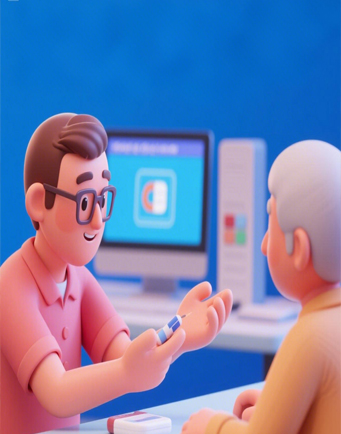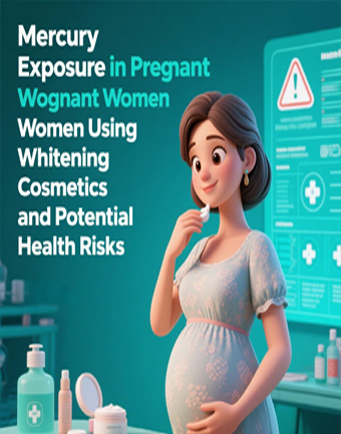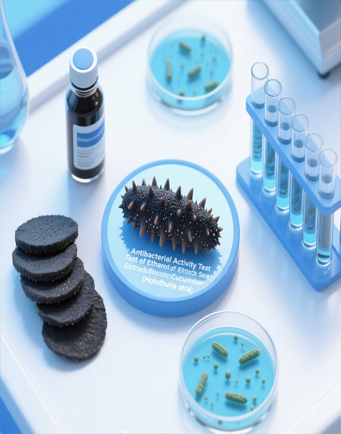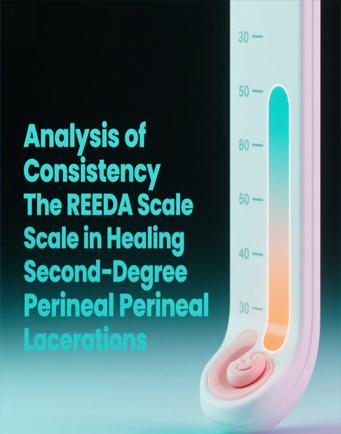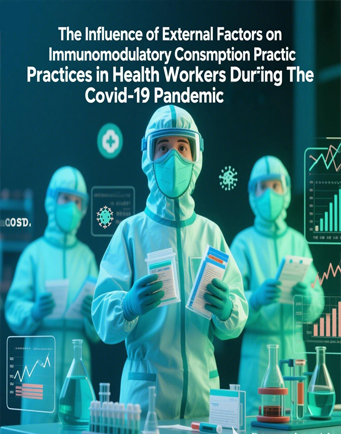The Effect of Simplisia Drying Method on Antioxidant Activity of Senggani Fruit Extract (Melastoma Malabathricum L.) by DPPH (2,2-diphenyl-1-picrylhydrazyl)
Downloads
Senggani fruit (Melastoma Malabathricum L.) contains anthocyanin that functioning as an antioxidant. Anthocyanin are tremendously sensitive to thermal processes which trigger phytochemical or photo-oxidation reactions that can open anthocyanin rings. The objective of this study is to identify the effect of the simplicia drying method on the antioxidant activity of Senggani fruit extract. Senggani fruit extract was prepared by obtaining samples of ripe fruit, dry sorting, washing, wet sorting, and drying using two methods; sunlight and oven at 70oC. After the simplicia was dry, it was blended and sifted until smooth. The fine simplicia was macerated with 96% ethanol and evaporated to gain a crude extract. The crude extract was assessed with reagents for phytochemical screening. Furthermore, the crude extract was examined for antioxidant activity by the DPPH method. This study implies that the simplicia and crude extract of Senggani fruit from drying in sunlight and oven possess different organoleptic properties such as color, smell, and taste. In phytochemical testing with reagents, it was discovered that anthocyanin compounds were unveiled in drying utilizing sunlight while employing an oven at 70oC; no anthocyanins were found. The antioxidant testing of Senggani fruit extract revealed that the drying method employing sunlight had an IC50 value of 18.8 g/mL while the oven temperature of 70oC owned an IC50 value of 28.3 g/mL. Based on the study results, it can be identified that the simplicia drying method affects the antioxidant activity of the Senggani fruit extract. The drying method in the sun produces extracts with greater antioxidant activity while drying in an oven at 70oC results in a degradation process of anthocyanin compounds, thereby decreasing the antioxidant activity of the Senggani fruit extract.
Al Ridho, E. (2013). Uji Aktivitas Antioksidan Ekstrak Metanol Buah Lakum (cayratia Trifolia) Dengan Metode DPPH (2,2-Difenil-1-Pikrilhidrazil). Jurnal Mahasiswa Farmasi Fakultas Kedokteran, UNTAN, 1(1).
Alappat, B., & Alappat, J. (2020). Anthocyanin Pigments: Beyond Aesthetics. Molecules, 25(23), 5500. doi: https://doi.org/10.3390/molecules25235500
Amperawati, S., Hastuti, P., Pranoto, Y., & Santoso, U. (2019). Efektifitas Frekuensi Ekstraksi Serta Pengaruh Suhu dan Cahaya Terhadap Antosianin dan Daya Antioksidan Ekstrak Kelopak Rosela (Hibiscus sabdariffa L.). Jurnal Aplikasi Teknologi Pangan, 8(1), 8. doi: https://doi.org/10.17728/jatp.3527
Che Omar, S. N., Ong Abdullah, J., Khairoji, K. A., Chin Chin, S., & Hamid, M. (2013). Effects of Flower and Fruit Extracts of Melastoma malabathricum Linn. on Growth of Pathogenic Bacteria: Listeria monocytogenes, Staphylococcus aureus, Escherichia coli, and Salmonella typhimurium. Evidence-Based Complementary and Alternative Medicine, 2013, 1–11. doi: https://doi.org/10.1155/2013/459089
Damanis, F. V. M., Wewengkang, D. S., & Antasionasti, I. (2020). Uji Aktivitas Antioksidan Ekstrak Etanol Ascidian Herdmania Momus Dengan Metode DPPH (1,1-Difenil-2-Pikrilhidrazil). Pharmacon, 9(3), 464-469. doi: https://doi.org/10.35799/pha.9.2020.30033
Danladi, S., Wan-Azemin, A., Sani, Y. N., Mohd, K. S., Rao US, M., Mansor, S. M., & Dharmaraj, S. (2015). Phytochemical Screening, Total Phenolic and Total Flavonoid Content, and Antioxidant Activity of Different Parts of Melastoma Malabathricum. Jurnal Teknologi, 77(2). doi: https://doi.org/10.11113/jt.v77.5988
De Gaulejac, N. S. C., Provost, C., & Vivas, N. (1999). Comparative study of polyphenol scavenging activities assessed by different methods. Journal of Agricultural and food Chemistry, 47(2), 425-431. doi: https://doi.org/10.1021/jf980700b
Departemen Kesehatan Republik Indonesia. (2000). Parameter Standar Umum Ekstrak Tumbuhan Obat. Jakarta: Departemen Kesehatan Republik Indonesia.
Handayani, R., & Rusmita, H. (2017). Uji Daya Hambat Ekstrak Etanol Akar Kelakai (Stenochlaena palustris (Burm. F.) Bedd.) terhadap Bakteri Escherichia coli. Jurnal Sutya Medika, 2(2), 13–26.
International Conference on Harmonisation. (1994). Validation of Analytical Procedures: Text and Methodology Q2(R1). ICH Harmonised Tripartite Guideline. Retrieved from: https://database.ich.org/sites/default/files/Q2_R1__Guideline.pdf
Kartikasari, D., & Ropiqa, M. (2018). Uji Aktivitas Antioksidan Ekstrak Buah Senggani. Jurnal Ilmiah Ibnu Sina, 3(2), 205-214. doi: https://doi.org/10.36387/jiis.v3i2.169
Kedare, S. B., & Singh, R. P. (2011). Genesis and development of DPPH method of antioxidant assay. Journal of Food Science and Technology, 48(4), 412–422. doi: https://doi.org/10.1007/s13197-011-0251-1
Kementerian Kesehatan Republik Indonesia. (2017). Farmakope Herbal Indonesia Edisi II. Direktorat Jendral Kefarmasian dan Alat Kesehatan. Jakarta: Kementerian Kesehatan Republik Indonesia.
Khoo, H. E., Azlan, A., Tang, S. T., & Lim, S. M. (2017). Anthocyanidins and anthocyanins: Colored pigments as food, pharmaceutical ingredients, and the potential health benefits. Food & Nutrition Research, 61(1), 1361779. doi: https://doi.org/10.1080/16546628.2017.1361779
Luliana, S., Purwanti, N. U., & Manihuruk, K. N. (2016). Pengaruh cara pengeringan simplisia daun senggani (Melastoma malabathricum L.) terhadap aktivitas antioksidan menggunakan metode DPPH (2, 2-difenil-1-pikrilhidrazil). Pharmaceutical Sciences & Research, 3(3), 120-129. doi: https://doi.org/10.7454/psr.v3i3.3291
Mardina, P. (2011). Pengaruh Kecepatan Putar Pengaduk dan Waktu Operasi pada Ekstraksi Tannin dari Mahkota Dewa. Jurnal Kimia, 5(2), 125–132.
Martiningsih, N. W., Widana, G. A. B., & Kristiyanti, P. L. P. (2016). Skrining Fitokimia Dan Uji Aktivitas Antioksidan Ekstrak Etanol Daun Matoa (pometia Pinnata) Dengan Metode DPPH. Prosiding Seminar Nasional MIPA.
Ondagau, D. C., Ridhay, A., & Nurakhirawati, N. (2018). Karakterisasi Pigmen Hasil Ekstraksi Air-Etanol Dari Buah Senggani (Melastoma malabathricum). KOVALEN: Jurnal Riset Kimia, 4(3), 228-236.
Pitoyo, A. J., & Triwahyudi, H. (2017). Dinamika perkembangan etnis di Indonesia dalam konteks persatuan negara. Populasi, 25(1), 64-81. doi: https://doi.org/10.22146/jp.32416
Sastrawan, I. N., Sangi, M., & Kamu, V. (2013). Skrining fitokimia dan uji aktivitas antioksidan ekstrak biji adas (Foeniculum vulgare) menggunakan metode DPPH. Jurnal Ilmiah Sains, 13(2), 110-115. doi: https://doi.org/10.35799/jis.13.2.2013.3054
Syafitri, N. E., Bintang, M., & Falah, S. (2014). Kandungan fitokimia, total fenol, dan total flavonoid ekstrak buah harendong (Melastoma affine D. Don). Current Biochemistry, 1(3), 105–115.
Copyright (c) 2023 JURNAL INFO KESEHATAN

This work is licensed under a Creative Commons Attribution-NonCommercial-ShareAlike 4.0 International License.
Copyright notice
Ownership of copyright
The copyright in this website and the material on this website (including without limitation the text, computer code, artwork, photographs, images, music, audio material, video material and audio-visual material on this website) is owned by JURNAL INFO KESEHATAN and its licensors.
Copyright license
JURNAL INFO KESEHATAN grants to you a worldwide non-exclusive royalty-free revocable license to:
- view this website and the material on this website on a computer or mobile device via a web browser;
- copy and store this website and the material on this website in your web browser cache memory; and
- print pages from this website for your use.
- All articles published by JURNAL INFO KESEHATAN are licensed under the Creative Commons Attribution 4.0 International License. This permits anyone to copy, redistribute, remix, transmit and adapt the work provided the original work and source is appropriately cited.
JURNAL INFO KESEHATAN does not grant you any other rights in relation to this website or the material on this website. In other words, all other rights are reserved.
For the avoidance of doubt, you must not adapt, edit, change, transform, publish, republish, distribute, redistribute, broadcast, rebroadcast or show or play in public this website or the material on this website (in any form or media) without appropriately and conspicuously citing the original work and source or JURNAL INFO KESEHATAN prior written permission.
Permissions
You may request permission to use the copyright materials on this website by writing to jurnalinfokesehatan@gmail.com.
Enforcement of copyright
JURNAL INFO KESEHATAN takes the protection of its copyright very seriously.
If JURNAL INFO KESEHATAN discovers that you have used its copyright materials in contravention of the license above, JURNAL INFO KESEHATAN may bring legal proceedings against you seeking monetary damages and an injunction to stop you using those materials. You could also be ordered to pay legal costs.
If you become aware of any use of JURNAL INFO KESEHATAN copyright materials that contravenes or may contravene the license above, please report this by email to jurnalinfokesehatan@gmail.com
Infringing material
If you become aware of any material on the website that you believe infringes your or any other person's copyright, please report this by email to jurnalinfokesehatan@gmail.com.






